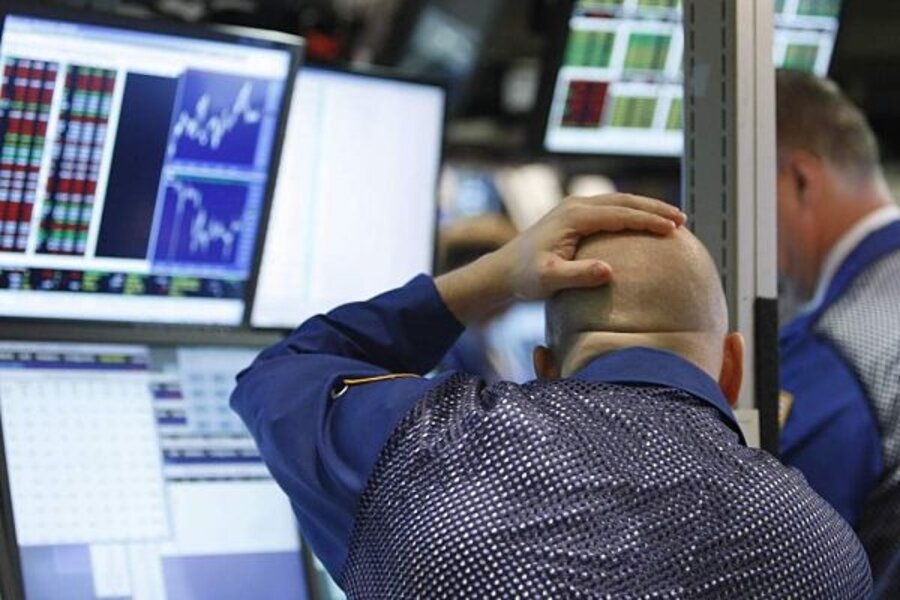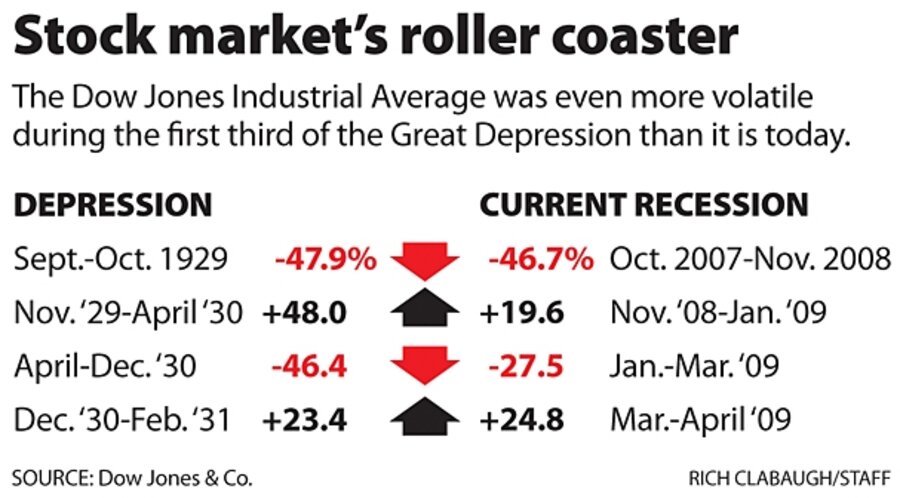Dow's spring rally: Is it real (or like 1931)?
Loading...
The US stock market is having a great spring.
The Dow Jones Industrial Average has rallied just a shade under 25 percent since hitting a multiyear low in early March. It has put together back-to-back monthly gains for the first time in a year.
Those are the types of gains that are turning many analysts into cautious optimists.
"Our conviction is growing that this last bottom [on March 6] represents the low for the present cycle," wrote Bob Doll, vice chairman of New York-based investment manager BlackRock Inc., earlier this week. "We are not convinced that we are at the beginning of a new secular bull market, since there are still a number of downside risks and a high degree of uncertainty remains. We do, however, continue to believe that stock prices will be higher one year from now than they are today."
Time to reinvest?
So is it time to dive into this market? Wall Street rewards the bold. History suggests volatility ahead.
The last time the world's financial system was this wobbly, Herbert Hoover was president and the Dow had plunged 48 percent from September to November 1929. Take a look at the chart above showing the first two drops and rebounds of the Great Depression and the current recession.
The bottom line: Fifteen months after hitting its peak in 1929, the Dow was down 49 percent; a little over 18 months after reaching its latest peak, the Dow is now down 42 percent.
Eerie resemblance, isn't it?
History learned?
History isn't destiny and just because some indicators coincide doesn't mean we're on the same track as we were in the 1930s. The economy back then was far different. Even the makeup of the Dow was different. The Obama administration and the Federal Reserve have so far avoided the mistakes during the Hoover era.
Instead, imagine yourself in early 1931. The president was sounding optimistic. But unemployment was bad, worse than it is today (see the elegant comparisons by Time's Justin Fox here and here). Apple sellers really had hit the streets of New York and in places like Minnesota, hungry mobs were beginning to break into groceries. There were bank runs.
What no one knew was how much worse bank runs and unemployment and investor confidence would get. By year's end, the Dow would plunge 62 percent.
Great crises are never static. They ride big waves of fear alternating with hope. Only when the system really adjusts does steady growth become possible.
And the real spring begins.
___________
Has today's economy wrung out enough of its imbalances? Twitter us with your ideas.






